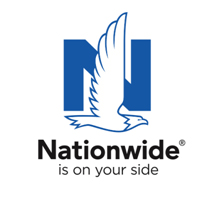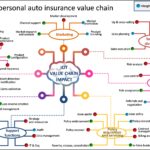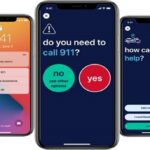Telematics insurance has traversed more than two decades, cycling through phases of curiosity, dedication and subsequent disappointment. Only recently has the U.S. auto insurance sector acknowledged its pivotal status as a fundamental capability within the personal auto line.
Executive Summary
Only recently has the U.S. auto insurance sector acknowledged the pivotal status of telematics as a fundamental capability within the personal auto line.Here, Nationwide AVP Kelly Hernandez and CM Guest Editor Matteo Carbone review Nationwide’s trailblazing efforts to offer UBI programs—and expand them beyond the discount-only pricing programs that once defined the space. Educating agents and impacting distracted driving behaviors along the way, the carrier is building off early learnings and successes to bring to market the next wave of telematics capabilities.
Telematics pioneers like Nationwide have successfully moved beyond the discount-only pricing programs that once defined the space to positively impact policyholder driving behaviors and start to reshape how we think about auto insurance.
Beyond Upfront Discounts
For many years, insurers predominantly relied on approaches centered around onboard diagnostic (OBD) devices that were provided to policyholders solely to evaluate their driving behaviors over a limited period. An incentive in the form of upfront discounts was extended to encourage participation, and upon policy renewal, proficient drivers were granted supplementary discounts.
This IoT approach, involving the collection of insights for a restricted duration, represents a rudimentary implementation of the IoT framework. This is largely a result of the sector’s limited maturity in harnessing telematics data and the elevated cost of the devices involved. The exclusively “discount-only” approach restricted insurers’ ability to improve price accuracy. The primary value for insurers predominantly emanated from self-selection: within each pricing tier, a greater proportion of comparatively good drivers exhibited an inclination to enroll.
The landscape has undergone substantial transformation in the latter portion of the previous decade and in recent years. Insurers have maintained their perception of telematics as a product, referred to as usage-based insurance (UBI) auto policies, primarily tailored for new (self-selected) policyholders. Carriers have developed more robust capabilities in effectively managing telematics data, accumulating actuarial evidence to think differently about how to rate auto insurance more accurately. This transition enables insurers to think beyond providing a discount to the most favorable risk profiles. Telematics pricing will see significant advancements in the future as carriers look to put more weight on rating customers based on how they drive and less on non-driving variables.
Insurers have gradually embraced a mobile-centric approach, complemented in some cases by a small in-car beacon partnered with a smartphone app. Driving behaviors are acquired through phone sensors, and the data is subsequently transmitted to the insurer. The number of UBI policies has grown more than threefold from 2016 based on the IoT Insurance Observatory research—reaching 17 percent penetration per J.D. Power’s recent survey—and this considerable expansion has been propelled by mobile-based approaches. Nowadays, the OBD dongles are mainly used for pay-per-use policies where the precise tracking of all the miles driven is a fundamental part.
The adoption of the mobile-centric approach has yielded cost reductions in data capture costs and has facilitated the widespread implementation of continuous engagement strategies by numerous carriers. This signifies a more mature way to apply IoT to the insurance business. The gradual accumulation of experience has enabled the industry to pivot its attention from the product (UBI policy) toward integrating the IoT paradigm across all fundamental insurance processes.
Let’s delve tangibly into this paradigm.
- The sensor component, either embedded in the phone, installed within the vehicle or even inherently built-in, captures car movements throughout the entire policyholder-insurer relationship.
- Leveraging the connectivity facilitated by the mobile network, sensor data is seamlessly transmitted to the cloud.
- Through analytics, raw data, encompassing sequences of GPS coordinates, acceleration forces and more, is translated into curated driving behaviors, consequently quantifying the customer’s risk profile. Moreover, these analytics can identify events like potential accidents based on shock measurements or vehicle theft through anomalous driving patterns.
- Lastly, in the application phase insurers can leverage these insights to make smart decisions that would have been unattainable in the absence of this continuous stream of information. Never have insurance carriers had access to customers’ actual real-time driving behaviors. This will enable them to reimagine how to more effectively price auto insurance.
This type of a continuous engagement approach also offers the opportunity to evaluate how to use this data to improve the customer experience across the entire insurance value chain. Nationwide already has expanded the approach beyond just providing a discount for auto insurance. Furthermore, Nationwide is evaluating what the future would look like if telematics was integrated across acquisition, underwriting, billing, pricing and claims experiences.
Beyond Auto
The usage of driving data has even been pushed beyond auto. Nationwide has extended benefits from auto telematics participation to homeowners insurance. The company is currently rolling out a telematics property discount countrywide. Customers who have enrolled in one of Nationwide’s auto telematics programs and have earned a safe driving discount will be eligible to receive a discount automatically on their homeowners insurance renewal.
In the U.S. market, a recent development involves extending telematics apps to the entire policyholder portfolio, not solely limited to those who have enrolled in UBI policies. In many instances, insurance companies have integrated this capability into their flagship app, opening new telematics-based capabilities for all their customers. This development aligns with the foresight outlined in co-author Carbone’s 2021 article “The Past, Present, and Future of Telematics and UBI.”
SmartRide and SmartMiles
Currently, Nationwide presents two distinct telematics value propositions. With this, Nationwide allows each policyholder to enroll in multiple programs on one policy that may help them customize the policy for their specific needs.
The first is SmartRide, which follows the conventional UBI model, providing an initial upfront discount and utilizing telematics data to determine pricing at policy renewal, or in some instances, adjusting their premiums midterm. At Nationwide, in most states, the participation discount is 15 percent, and customers see an average savings of 24 percent in as little as 80 days.

SmartRide was initially introduced in 2012 and has undergone continuous refinement. Today, driving data is captured through mobile apps, OBDII and connected car technologies. Mobile apps are the most popular approach used today; however, connected car enabled data collection is growing. Through connected car-enabled partnerships, Nationwide offers customers their earned discount instantly at the time of quote, removing the driving evaluation period.
The second program, launched in 2019, is SmartMiles, an OBDII-based UBI pay-per-mile structure. The introduction of this supplementary option has played a substantial role in bolstering the penetration of telematics within the company’s personal auto business. This program isn’t only focused on mileage as it also includes a safe driving component that impacts their premium.
Through SmartMiles, Nationwide has seen the true power of pricing based on usage as it attracts customers who drive less. This is a new concept for many drivers as it adjusts the monthly premium based on mileage driven. Customers willing to try this new type of program save an average of 34 percent. Although the program’s initial emphasis was on drivers with low mileage, Nationwide is capitalizing on the early insights and achievements of this initiative to construct the next wave of solutions that could extend advantages to a broader audience.
Using co-author Carbone’s 4Ps framework for evaluating InsurTech initiatives and focusing on innovation efforts within the insurance sector, it is clear the impact of telematics on Nationwide’s business, and the rationale for the company’s commitment to this technology.
These encompass:
- Productivity, indicating improved top line.
- Proximity, denoting frequency of interaction with the customer.
- Profitability, in terms of technical results.
- Persistency, highlighting increased retention.
Productivity
Consumer acceptance of telematics technology is no longer a concern in the U.S. personal auto market. However, the growth of UBI programs will not happen overnight, often influenced by how infrequently consumers think about insurance and look to change their current policies.
Nationwide has observed that customers are increasingly willing to share their data through telematics, with a substantial 70-80 percent of direct customers choosing telematics at the point of sale.
However, for companies that sell auto insurance through agencies, one of the hurdles of getting customers to adopt telematics is first getting agents to understand the value proposition of the programs and then confidently offer it. Nationwide revealed that 67 percent of consumers have not discussed telematics with their insurance agents, and 40 percent of insurance agents do not feel knowledgeable enough to speak on telematics to counsel clients.
In recent years, Nationwide has made concerted efforts to ensure its agency partners are well-prepared and equipped to discuss telematics with their clients. The company has invested in educating agents and bolstering their confidence in promoting telematics. More importantly, Nationwide has listened to its agents and adjusted the programs based on their feedback. Early program designs applied the discount at the first renewal, which could be up to a year before the customer received their earned discount. Agent feedback told us we needed to accelerate it, and now premiums are adjusted mid-term so that a customer can get their earned discount in as little as 80 days. As a result of these changes, over the past 18-24 months, Nationwide has witnessed a remarkable 60 percent increase in telematics program adoption among independent agents.
Proximity
The ongoing connection and presence of a telematics device in the policyholder’s pocket provides a unique opportunity for engagement. Insurance companies previously had limited opportunities to connect with their customers. As these capabilities advance, the carrier must maintain a steadfast focus on its customers, guiding them along while gaining feedback as they create new experiences.
During distracted driving awareness month, Nationwide tested a push notification campaign through the SmartRide mobile app with educational messages about distracted driving. As a result, app interactions increased as much as 9 percentage points on days push notifications were sent and engagement continued several days after. This test showed that customers appreciate the new insights and coaching and respond positively to this form of communication. This type of testing has been a key element in improving driving behaviors and customer experiences. Beyond engagement, success can be measured in many ways including app store ratings and comments, in-app feedback, customer calls and surveys.
Profitability
Nationwide has proven insights from its telematics programs that are showing a positive change in driving behaviors on the road. The prevalence of distracted driving is a pressing concern. In the past year, based on a 2023 Nationwide survey, a concerning 35 percent of vehicle passengers reported witnessing their driver texting while behind the wheel. A notable 34 percent of Generation Z individuals admitted to video chatting, and 24 percent acknowledged using or checking social media while driving.
Thanks to the transition to the mobile-based approach in 2016, Nationwide was able to observe how often people are distracted by their phones while behind the wheel. The evidence was highly alarming and served as a catalyst for a focused effort to drive behavioral change. In 2020, Nationwide initiated the practice of sharing this data with its customers, primarily within the SmartRide Mobile program. The experience provides customized feedback on how often a driver is distracted by their phone and where the distraction occurred. A policyholder can review the distractions after the car is parked, and the prevailing trend indicates that most individuals are genuinely startled by how often they divert their attention from the road to check their phones.
This new awareness is making drivers want to change their behaviors. Encouragingly, this initiative has yielded tangible results. After being in the market less than a year, these drivers had a 10 percent reduction in everyday hand-held distractions. It also proves that a carrier can affect driving behaviors through telematics programs. Additionally, the usage of driving data has even been used to inform legislatures in passing distracted driving bills that help make our roads safer.
Nationwide is confident that reducing distractions plays a pivotal role in preventing accidents, protecting customers and communities, and ultimately, saving lives. This is the reason why Nationwide is continuing to evaluate additional ways to enhance this experience to further the impact. While many companies are starting to integrate this into pricing, rating for distracted driving, another opportunity is to reward those that remain focused and make changes to become safer. Either way, the good news is that this is completely in the customers’ control and can be changed for the better.
Persistency
Through the programs Nationwide has in market today, a positive impact to customer retention and satisfaction has been measured. For those that have participated in a telematics program, Nationwide consistently sees statistically significant improvement in overall satisfaction and the likelihood to recommend Nationwide. This is seen in customer retention, as well, which is typically two to three points higher than those that do not try telematics.
These results come from a 10-year journey using the telematics data. Nationwide is firmly convinced that telematics is a permanent fixture in the insurance landscape and will persist in its evolution. Drawing upon the wisdom garnered over the past decade, the company is actively forging the next generation of usage-based insurance capabilities within the organization.
(Related article: The Transformative Potential of Telematics Innovation)





















 Police Recover Swallowed Fabergé Pendant 6 Days After it Was Stolen
Police Recover Swallowed Fabergé Pendant 6 Days After it Was Stolen  Rebuilding Negotiation Talent: Why This Skill Is Missing and How to Fix It
Rebuilding Negotiation Talent: Why This Skill Is Missing and How to Fix It  How One MGU Grew Fivefold When Capacity Fled Cat-Prone Property Markets
How One MGU Grew Fivefold When Capacity Fled Cat-Prone Property Markets  Water Leaks, Frozen Pipes Top List of Small Business Claims: The Hartford
Water Leaks, Frozen Pipes Top List of Small Business Claims: The Hartford 











